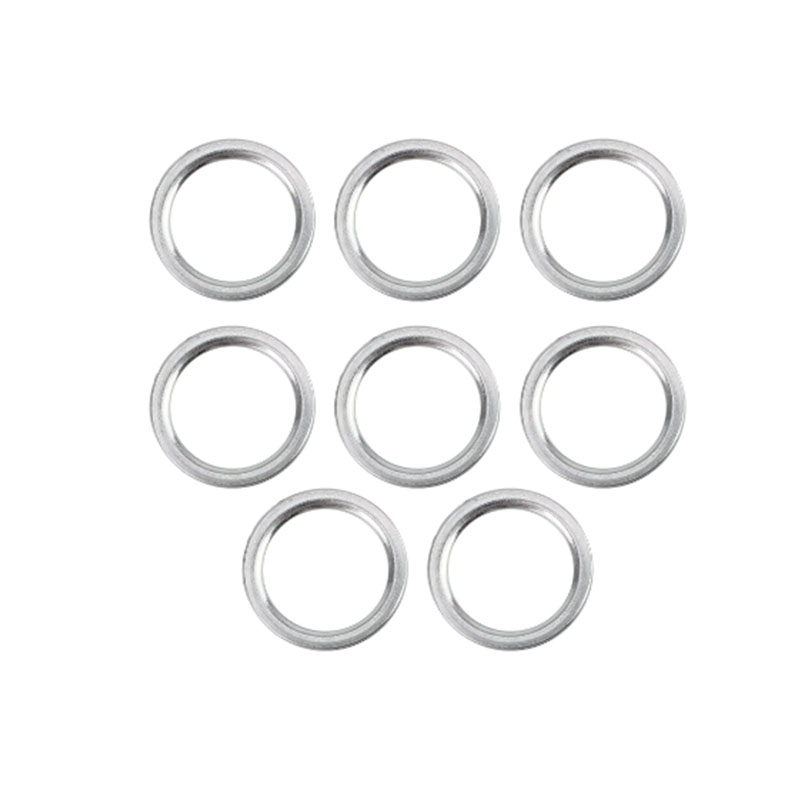lip oil seal types
Understanding Lip Oil Seal Types A Comprehensive Guide
When it comes to preventing fluid leakage in various mechanical systems, oil seals play a crucial role. Among them, lip oil seals are perhaps the most common type, widely used in automotive, industrial, and hydraulic applications. This article will delve into the different types of lip oil seals, their construction, applications, and the best practices for their usage and maintenance.
What are Lip Oil Seals?
Lip oil seals, also known as rotary shaft seals or simply oil seals, are designed to retain lubrication within a mechanism while preventing contaminants from entering. They consist of an elastomeric lip that makes contact with the shaft surface, ensuring a tight seal. The main function of these seals is to minimize fluid leakage, thereby enhancing the efficiency and longevity of machinery.
Types of Lip Oil Seals
1. Single Lip Seals This is the most basic form of lip oil seal, featuring a single elastic lip that presses against the rotating shaft. Single lip seals work well in applications where there is low-pressure differential and minimal exposure to contaminants.
2. Double Lip Seals As the name suggests, double lip seals come with two sealing lips. The primary lip retains oil, while the secondary lip acts as a barrier to protect against dust and other contaminants. These seals are ideal for harsh environments where additional protection is necessary.
3. Spring-Loaded Lip Seals These seals are equipped with a spring that applies pressure to the lip, ensuring a tighter fit against the shaft. The added tension helps to accommodate slight misalignments and variations in shaft size, making these seals suitable for dynamic applications.
lip oil seal types

4. Shielded Lip Seals Some lip seals come with a metal shield that provides additional protection against external debris while maintaining a fluid-tight barrier. This type is commonly used in automotive engines and gearbox applications where exposure to dirt and grime is prevalent.
5. Hydrodynamic Lip Seals These seals are designed to utilize hydrodynamic principles to create a dynamic seal that reduces friction. They are particularly beneficial in high-speed applications and can significantly enhance the lifespan of both the seal and the related machinery.
Applications of Lip Oil Seals
Lip oil seals are used in a multitude of applications across various industries. In automotive engines, they prevent oil from leaking and keep contaminants out. In industrial machinery, they provide essential sealing in hydraulic cylinders, pumps, and gearboxes. Additionally, in the aerospace sector, lip seals play a vital role in maintaining the integrity of systems exposed to extreme pressures and temperatures.
Best Practices for Usage and Maintenance
To ensure the longevity and effectiveness of lip oil seals, proper installation and maintenance are key. Here are some best practices
- Correct Sizing Always choose the right size of the oil seal for your application to prevent leakage or damage. - Surface Preparation Ensure that the sealing surfaces are clean and free from scratches or sharp edges that could damage the seal. - Lubrication Apply a thin film of lubricant to the lip of the seal before installation to reduce friction during operation. - Regular Inspections Conduct routine checks for signs of wear, leakage, or damage, and replace seals as needed to prevent system failures.
In conclusion, lip oil seals are vital components in various mechanical systems, designed to prevent oil leakage and protect against contaminants. Understanding the different types of lip oil seals and their applications can significantly improve the reliability and efficiency of your machinery. Proper installation and maintenance practices will further extend the life of these essential seals.
-
The Ultimate Guide to Car Repair Kits: Tools and Essentials Every Driver Should Own
News Aug.01,2025
-
The Complete Guide to Oil Pan Gaskets: Sealing Engine Leaks the Right Way
News Aug.01,2025
-
Preventing Oil Leaks: A Complete Guide to Oil Pan Gaskets and Drain Seals
News Aug.01,2025
-
Everything You Need to Know About Oil Pan Gaskets and Drain Plug Seals
News Aug.01,2025
-
Essential for Car Owners: How to Use a Car Repair Kit to Deal with Minor Breakdown
News Aug.01,2025
-
Comprehensive Guide to Engine Oil Sump Gaskets and Related Seals
News Aug.01,2025
-
The Ultimate Guide to Boat Propeller Bearings and Trailer Wheel Bearings
News Jul.31,2025
Products categories















